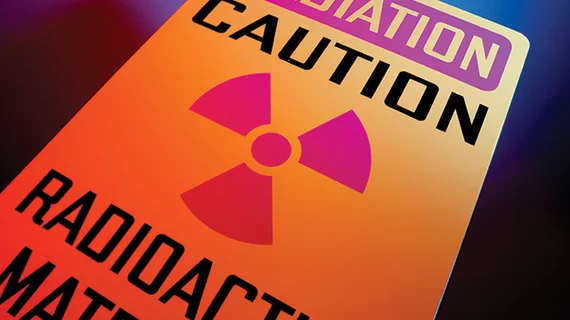‘Urgent’ action needed to address large number of patients receiving alarming CT radiation doses
The large number of patients still receiving an alarmingly high cumulative radiation dose from CT exams requires “urgent” action from stakeholders, researchers asserted in a new study.
A regional hospital network covering six facilities in Canada performed some 75,000 CT exams over a one-year period, or about 153 scans per 1,000 people, experts explained July 22 in the European Journal of Radiology.
Over the course of 2020, 0.67% of patients received a cumulative effective dose (CED) greater than 100 mSv. Additionally, nearly 12% exceeded the 25 mSv threshold, with nearly one-quarter of those patients younger than 55-years-old.
This “alarming" high CED rate should push providers to rethink their habits, particularly for younger groups, the authors cautioned.
“To this end, while optimization of CT examination protocols is a continuous pursuit, replacement of CT examinations wherever possible, with exams that utilize non-ionizing radiation (ultrasound and MRI), needs serious attention in particular for those in younger age bracket[s],” Moulay Ali Nassiri, with the Department of Nuclear Medicine and Radiobiology at the Université de Sherbrooke in Quebec, and colleagues wrote.
CT utilization is rapidly increasing across the globe, the authors wrote Thursday. And a recent U.S. study found patients receiving a 50 mSv-plus exam or cumulative day isn’t as rare as one might think.
To investigate the matter further, Nassiri et al. and rads with Massachusetts General Hospital analyzed dose data taken from eight CT scanners stationed across six facilities.
They recorded a mean CED of 12.3 mSv, an average individual effective dose of 1.1 mSv, and collective effective dose of 521.3 person-Sv. Furthermore, seven individuals revived more than 100 mSv from a single CT scan, while 0.36% had 10 or more exams in one year with 3.8% undergoing five or more.
Nassiri and co-authors also noted that their analysis took place during the pandemic, which saw an overall drop in CT usage, “thus the actual data for normal years is likely to give [a] higher number of high dose patients.”
In light of their findings, the Canadian system has proposed reexamining its principles and fundamentals of radiation protection.
The team suggests organizations establish their own imaging appropriateness committee to ensure patient safety is top of mind.
“Besides actions at [the] hospital level, it requires [the] attention of professional societies, radiation protection authorities at regional, national and governmental levels,” the team added.
Read the full study here.

